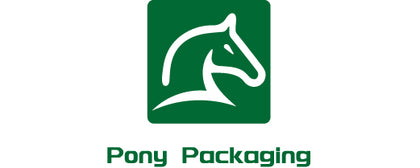How Does Receipt Paper Work?
In the world of retail and business transactions, receipt paper plays a crucial role in documenting purchases and providing customers with tangible proof of their transactions. One of the most common types of receipt paper is thermal paper, a special kind of paper that reacts to heat to produce images and text. In this article, we will explore the intricate workings of receipt paper, focusing on thermal paper and its various applications.
Understanding Thermal Paper
What is Thermal Paper?
Thermal paper is a type of paper that is coated with a chemical that changes color when exposed to heat. This chemical coating is usually composed of a combination of dyes and developers. When heat is applied to the paper, the developers react with the dyes, causing them to change color and create visible text or images.
Structure of Thermal Paper Rolls
Thermal paper is commonly used in rolls, making it ideal for point-of-sale (POS) systems and receipt printers. One popular size for thermal receipt paper rolls is 3 1/8 x 230 Thermal receipt paper, which is widely used in various businesses.
The rolls consist of several layers, each serving a specific purpose in the printing process. The base layer is typically made of paper, providing a foundation for the thermal coating. On top of the paper layer is the thermal coating itself, which contains the heat-sensitive chemicals responsible for generating the print.
The Printing Process
Thermal Register Paper in Action
When a transaction occurs, and a receipt needs to be generated, the thermal paper rolls into the printing mechanism of the register or printer. The printer applies heat to specific areas of the paper based on the content that needs to be printed.
As the heat is applied, the chemicals in the thermal coating react, resulting in the formation of text, numbers, and graphics on the paper. Unlike traditional printing methods that use ink, thermal printing is a clean and efficient process that doesn't require additional supplies like ink cartridges or ribbons.
Advantages of Thermal Receipt Paper
1. Speed and Efficiency: Thermal printing is faster than traditional methods, making it ideal for businesses with high transaction volumes. The absence of ink or toner cartridges also reduces downtime associated with changing consumables.
2. Clarity and Precision: Thermal printing produces sharp and clear prints, ensuring that the information on the receipt is easily readable. This is crucial for providing accurate transaction details to customers.
3. Low Maintenance: Thermal printers are relatively low-maintenance compared to other types of printers. With no ink or ribbons to replace regularly, businesses can save on operational costs.
Applications of Thermal Paper
Point-of-Sale Systems
One of the primary applications of thermal paper is in point-of-sale systems. Retailers, restaurants, and various businesses use thermal receipt paper to generate receipts for customer transactions quickly.
Ticket Printing
Beyond retail, thermal paper is also commonly used in ticket printing. Whether it's for cinema tickets, event tickets, or transportation tickets, the speed and efficiency of thermal printing make it an ideal choice for these applications.
Label Printing
Thermal paper finds applications in label printing as well. From product labels to shipping labels, businesses can print clear and durable labels using thermal paper rolls.
Environmental Considerations
While thermal paper offers numerous advantages, there are environmental considerations associated with its use. The thermal coating often contains chemicals like bisphenol A (BPA), which has raised concerns about potential health and environmental impacts. However, there are BPA-free thermal papers available as a more eco-friendly alternative.
Conclusion
In conclusion, receipt paper, especially thermal paper, is a vital component of modern business transactions. Its ability to produce clear and concise prints quickly has made it a preferred choice for various industries. Understanding the structure and printing process of thermal paper can help businesses make informed decisions about their choice of receipt paper, balancing efficiency with environmental considerations. As technology continues to advance, we can expect further innovations in receipt paper technology, providing even more sustainable and efficient solutions for businesses worldwide.


